
To be a successful nursing student or nurse you must understand how to write nursing care plans. Studies by ANA have shown that nursing school students who can write kick-ass nursing care plans proceed to have successful careers in the nursing workplaces. So now that your professor insists that you must know how to write nursing care plans or how to write nursing diagnosis, do you have any choice? Probably no!
It is always never just about writing but writing detailed nursing care plans. Learning the steps on how to write a diagnosis makes you think like a professional nurse. So every time you get a chance to write nursing assignments, do not frown. It is the best training you are getting. And when you master the art of writing nursing care plans, whether when studying or practicing in clinical settings, you can work in community care and mental health care centers.
Now, in this piece of nursing pearl, we take you through the steps of mastery on how to write nursing care plans. We believe that the sooner you love nursing care plans, the easier it is for your academic and career progress.
We do not want you asking what a nursing care plan is at the last moment. We want you to have access to nursing care examples, write a nursing diagnosis, and learn how to do a nursing care plan. That is what this entire article is about. So, grab some pen and paper, and most importantly a glass of water or coffee, because it is about to get real.
As a professional nurse and an educator, it will be a disservice to assume you know the answer to the question what is a nursing care plan? By the way, why do we need to learn how to write a nursing care plan?
Now, nursing has evolved to be evidence-based and that is why you will be assigned to write evidence-based practice papers. Writing the best nursing care plan is an unavoidable skill and requires a stepwise approach.
Nursing Care Plans abbreviated as NCP are formally written documents or medical records that are very critical in the nursing diagnosis process. Nursing care plans document the assessment, diagnosis, interventions, and evaluation of patients. Specifically, the nursing care plan records the identification of existing needs, recognition of the potential patient needs, and potential risks.
The nursing care plans help nurses to plan how to offer nursing care to patients. Even when taking different shifts, nurses can offer consistent and continuous care to patients. Still, the care plans help nurses to communicate with multidisciplinary teams on matters pertaining to patient care.
With the knowledge of writing nursing care plans, your confidence in handling a patient increases. Do you know that offering individualized or patient-centered care depends on how good your nursing care plan is? Well, now you know!
There are two major types of nursing care plans:
Before learning how to write a nursing diagnosis, it is paramount to understand the formats or types of nursing assignments. Care plans can either be formal or informal.
The formal nursing care plans are in print, written form, or computer-generated guides that organize the information vital for the care of patients. Formal standardized care plans are specific to the daily nursing care needs of given groups of clients or patients. On the other hand, the individualized care plans are specifically written to suit the unique needs of specific patients that cannot be addressed in the former.
Nursing care plans have different objectives and goals.
These are but a few uses of nursing care plans. But how do we write nursing care plans?
We focus on the student care plans, which nursing students frequently write. To write the Nursing Care Plans (NCP), students are assigned a nursing case study. The case studies are often patient scenarios that can either be real or imagined for purposes of learning. When you have a nursing care plan case study, you need to follow these steps to write a nursing care plan that meets the rubric requirements.
Every nursing school or learning institution has a preferred nursing care plan format that they advise students to use. The best place to find the breakdown of approaching a nursing care plan as a student is to read the rubric and the assignment instructions. Along with the rubric, the instructors also give the patient scenario from which the student develops a nursing care plan.
Below is a sample patient scenario that might require you to use the clinical reasoning cycle to develop a nursing care plan.
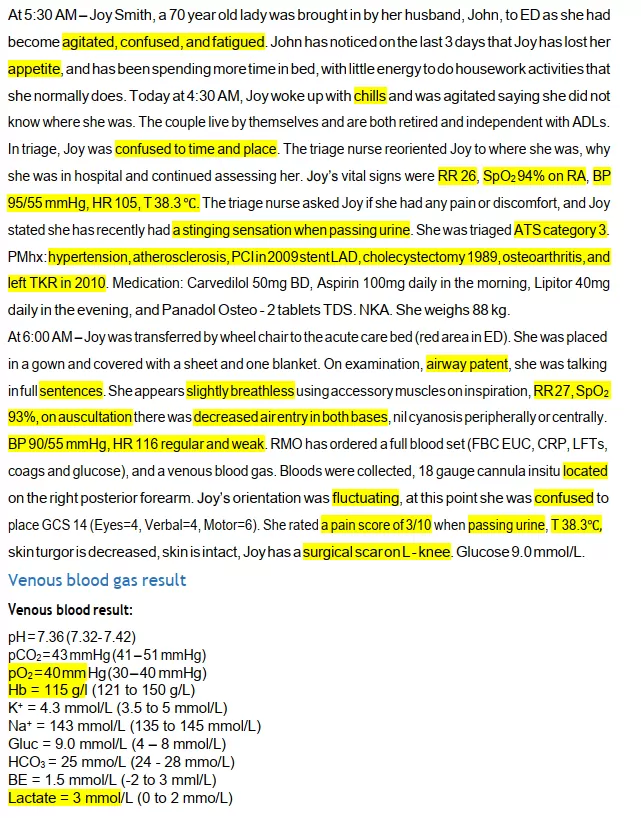
In most cases, the instructor is interested in presenting the scenario or the patient, collecting cues, processing information, identifying problems, setting long-term, medium-term, and short-term goals, writing interventions and rationale and evaluating the outcomes.
As a student writing answers to a nursing case study or patient scenario, you need to begin the process by outlining the aspects of the case. You need to paraphrase the case study to set the context of the case study.
When presenting the case, you need to introduce the patient and present their background and situation, including the condition, timeframe, and clinical setting. This usually takes 200-250 words but differs depending on the instructions.
This is usually the introduction of your nursing care plan.
When writing a nursing care plan (NCP), you need to collect data or assess the patient scenario as a student nurse. Your intention here is to create a client database developed using data collection methods and assessment techniques.
You can tabulate the data in the A -G format as presented in the sample patient assessment below.
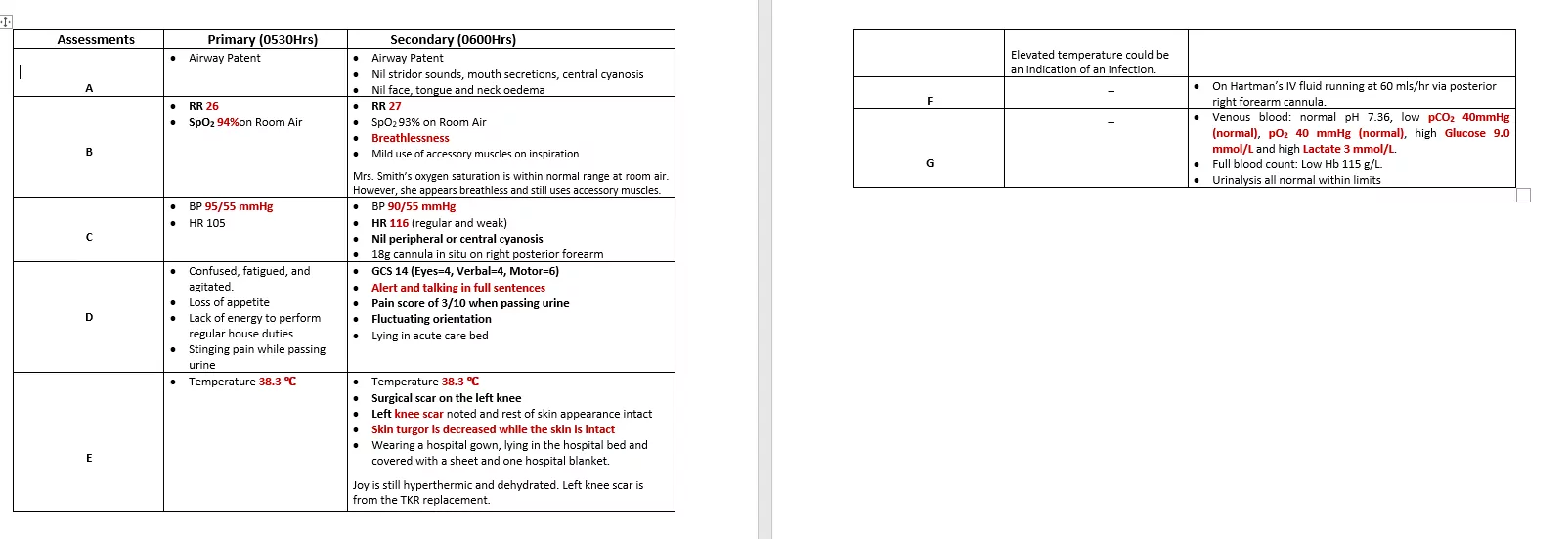
Your assessment should include all the health information, consisting of the vitals within the normal range and the vitals above the normal range.
Having a small database or medical record of the patient helps organize all health information that is gathered. You should focus on related risk factors and the critical facts to formulate a nursing diagnosis when doing this part.
Your professor can provide the nursing assessment format or form, and all you need to do is fill. If not, there are several nursing assessments examples online. However, we prefer tabulating the A-G assessment as it makes everything easier to complete.
Now, you have to ask yourself these questions:
You would agree with the American Nursing Association that your focus should be economic, physical, emotional, spiritual, sociocultural, and physiological data when gathering patient data. Understand the lifestyle of the patient and the source and the manifestation of pain.
With an exceptionally written assessment section, you are sure that you have a good nursing care plan.
With the information about the client, the vitals of interest, and appropriate history, you now need to process the data to develop a diagnosis.
At this stage, you are analyzing the cues to distinguish between the relevant and irrelevant information to include in the plan. You can cluster the cues together and identify the link between them. As well, you should match the relevant information collected from the patient presentation and the history. You can then describe how you have concluded the patient's underlying pathophysiology or condition.
For the student nursing diagnosis, some institutions might require using the NANDA International Nursing Diagnoses approach.
This part lists the health problems and conditions of the patients to formulate a diagnosis for the patient. Again, to succeed in this part, you must acquaint yourself with the types of nursing diagnoses.
Studies have proven the efficiency of nursing care plans based on NANDA in improving skills on the choice of diagnosis, formulation of diagnosis, and individualization of care.
NANDA International is a nursing professional organization that develops research, refines nomenclature, criteria, and taxonomy, and disseminates nursing diagnoses.
According to NANDA, there are four types of nursing diagnosis: Acute diagnosis, risk diagnosis, health promotion diagnosis, and syndrome diagnosis. Stick to the best format to ensure that you write the best diagnosis statement and a better diagnosis nomination.
Diagnosis begins with a diagnostic label, also known as a problem statement. The second section is the RT or related part that highlights the cause of the problem. The third and last part focuses on defining characteristics based on inferences based on the signs and symptoms.
This section is usually prose of about 450-500 words. However, some instructors prefer that the section be written in prose detailing the pathophysiology of the underlying condition or disease that the patient has: from the case study.
In this section of the care plan, you have to prioritize critical problems for your patient scenario. You are allowed to use medical jargon/terminology as well as a nursing diagnosis framework.
Most instructors require you to prioritize three relevant problems from the patient scenario, with at least two high-priority problems.
To prioritize, you need to understand the health value and beliefs, and priorities of the client. Also, check the availability of resources and the urgency of the problem.
With the priorities set for your nursing diagnosis, it is time to set goals defined by the priority. Often called desired outcomes, goals describe what the nurse expects to achieve within a given time frame after implementing an intervention.
The nursing diagnosis is the source of these goals. The goals direct the planning of interventions and help evaluate the progress of the patient. They are also motivational for the nurse and the patient as they depict improvement of the patient situation.
An example of a goal:
CRITICAL PROBLEM: Fever related to viral lung infection evidenced by hyperthermia, HR= 103 bpm, RR= 26 bpm, drowsiness.
SMART GOAL: The patient remained in a normal range (36.6 - 37.4) of body temperature within two hours.
The goals need to be SMART. Goals can be short-term (shift in behavior almost immediately or within a few hours/days) or long-term (change in patient's health and wellbeing over a long period of intervention). Ensure that these goals are client-centered, realistic, achievable, and measurable.
The goals must include the subject (the client), verb (action performed to the client), modifiers or conditions (what, when, where, and how), and the criterion of desired performance (the standard to evaluate the performance of the client given the interventions).
When formulating the goals:
After writing the planning section of the nursing care plans, the next part is to draft the best nursing intervention. Interventions are meant to help achieve the goals of the patients/clients.
These interventions are meant to eliminate, mitigate, or reduce the etiology of the nursing diagnosis. For example, if it is a risk diagnosis, the intervention should reduce the risk factors for the client.
Primarily, interventions seek to reduce or eliminate the etiology of the nursing diagnosis. With risk nursing diagnosis, the interventions should reduce the risk-factor exposure of the patient. Therefore, the nursing interventions must come up during the planning step of any nursing process. However, the implementation only becomes potent during the implementation phase.
There are different types of nursing interventions:
Interventions must be achievable given the resources and time. Besides, they should align with the culture, values, beliefs, and preferences, and therapies the client is undertaking. Finally, ensure that the interventions are also evidence-based.
So, when writing an intervention, there must be data and the signature of the nurse. The interventions should be specific and precise, and abbreviations only accepted by an institution should be used.
In most cases, the interventions are written in a table that has the diagnosis, outcomes, interventions, rationale, and evaluation, in that order as shown in the sample nursing care plan presented in this nursing care plan guide for nursing students.
The interventions should be:
Even though your professor or instructor might not ask for this, but writing a scientific explanation of the basis of an intervention is preferred in a nursing care plan.
The main aim of the rationale is to assist the nursing students in linking different psychological and pathophysiological principles to the nursing interventions.
With a nursing care plan that has a rationale for the intervention, your professor will praise you for having a well-written nursing care plan.
Like the interventions, the rationale must be backed by appropriate citations, as shown in our sample.
A nursing plan care evaluation plan helps you offer ongoing and purposeful follow-up of the patients' progress towards the achievement of the set goals.
It helps define the effectiveness of the nursing care plan and helps conclude to determine if an intervention is effective or should be changed.
Note: Nursing Care Plans (NCP) follow hospital policies and eventually become the patients' permanent medical records. You must also understand that diversity in programs makes nursing care plan formats different. For example, most NCPs follow the five-column format while others allow students to record interrelated steps systematically.
For sample nursing care plans and NANDA nursing diagnoses, please consult with our support team. We also help write a nursing care plan within the shortest turnaround time; our nursing care plan writing service comes in handy.
In Pictures, here is a sample nursing care plan for a patient diagnosed with mild Cognitive Impairment at a nursing home.
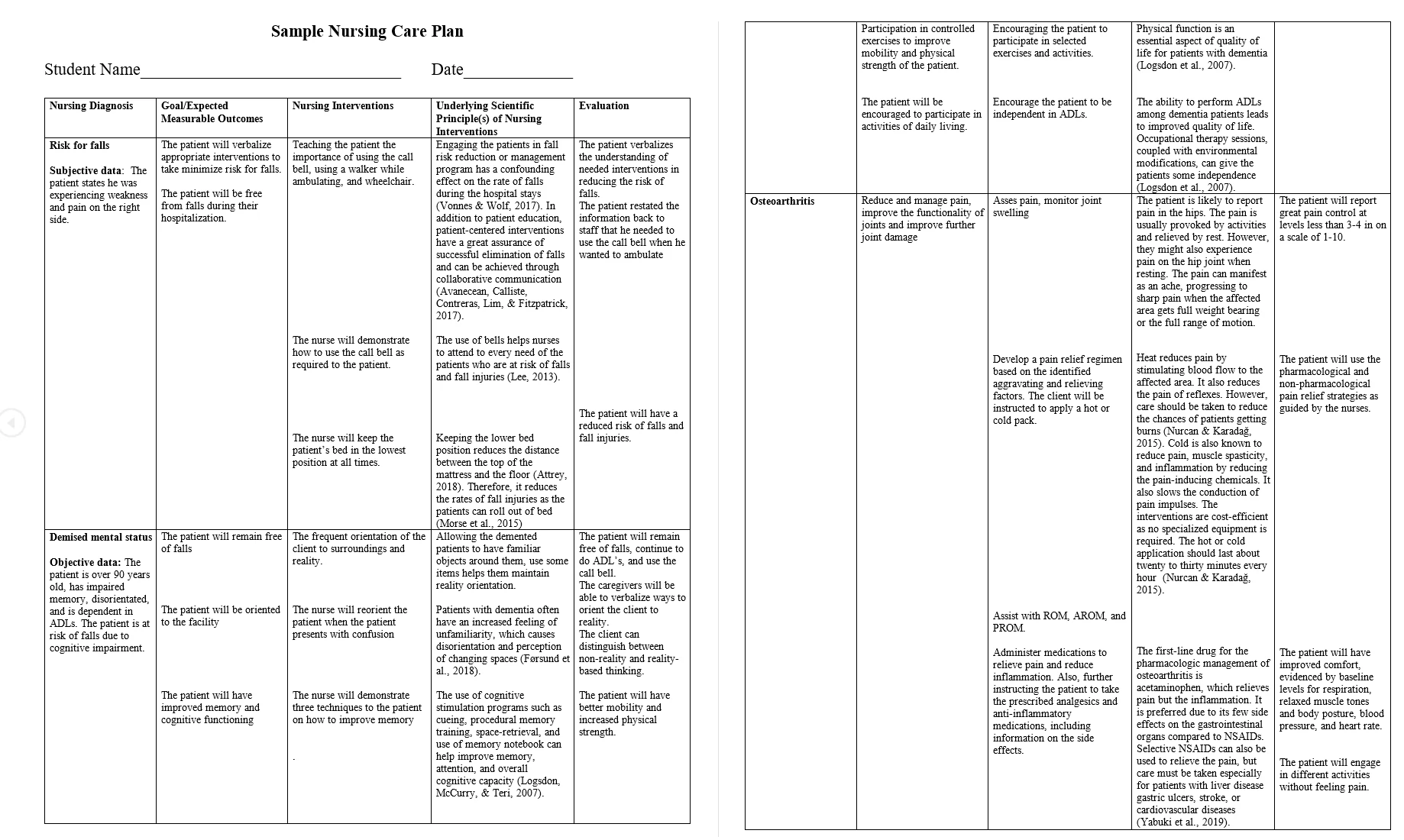
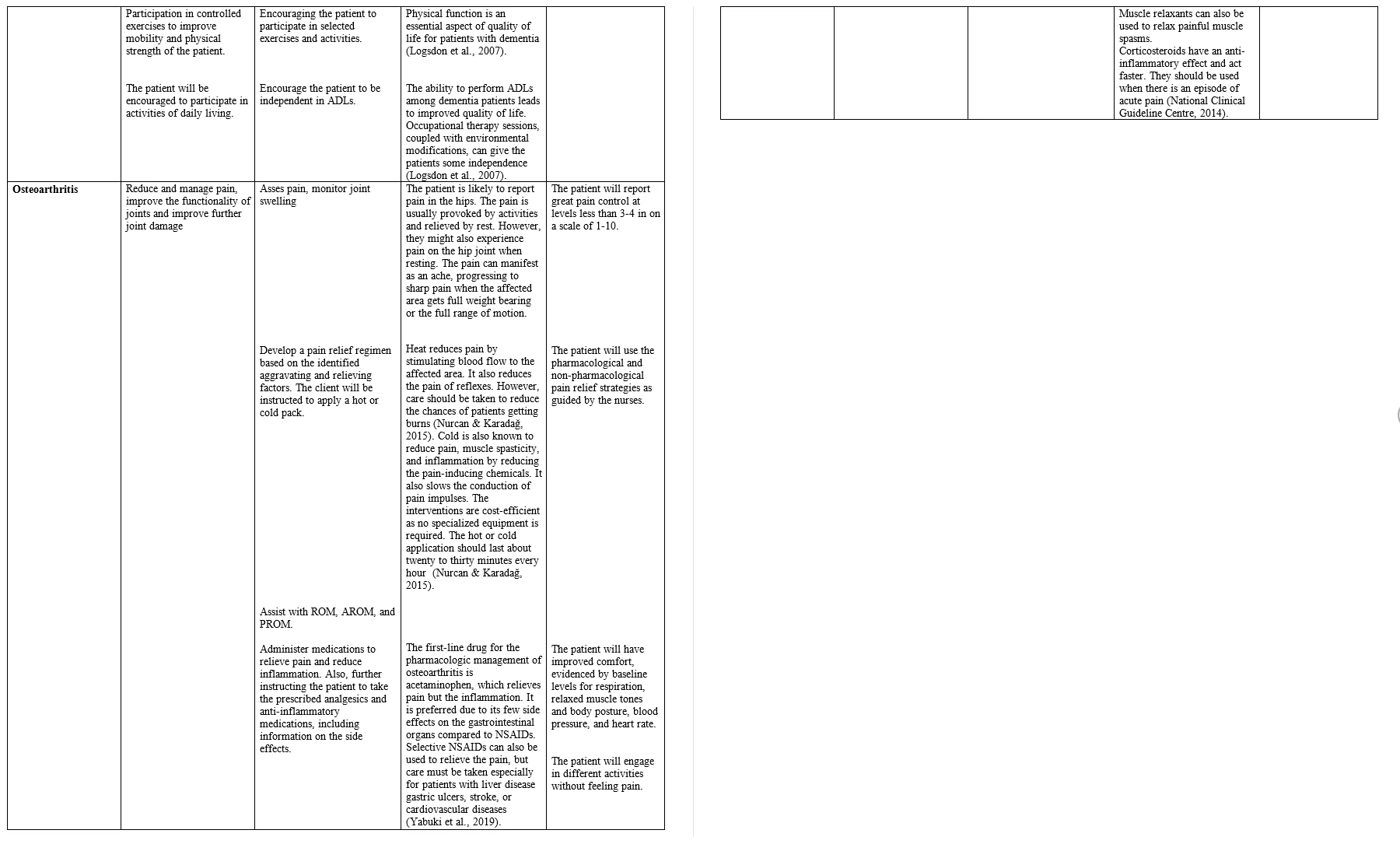
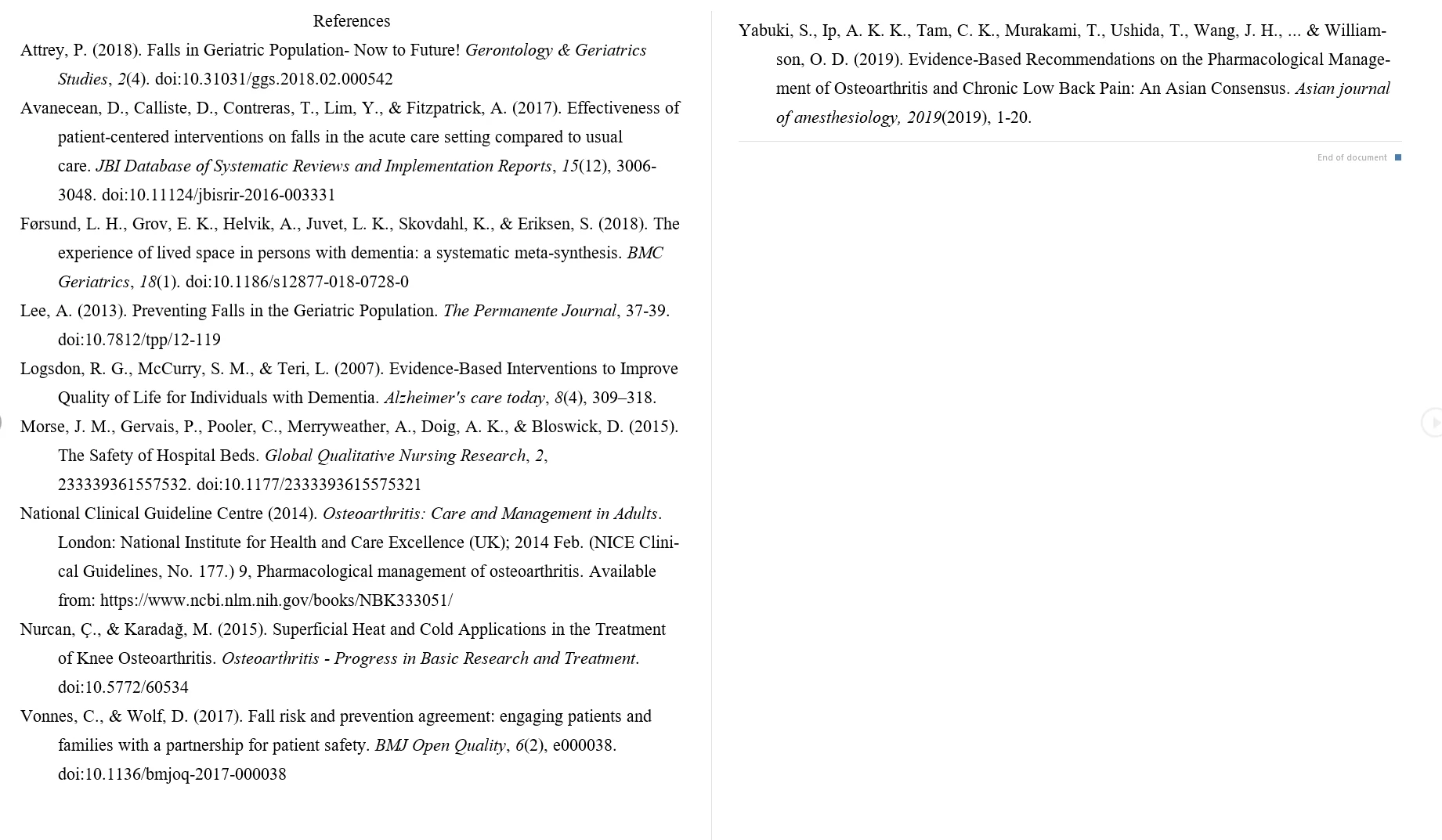
We hope the example becomes a great starting point as you brainstorm and plan to write your nursing care plan. We can also help you with writing nursing care plans, visit our homepage and place an order. We will assign a nursing expert who will help you write a kickass nursing care plan.
After writing your nursing care plan, here is a special checklist that can help you assess whether it fits the full definition of a comprehensive care plan.
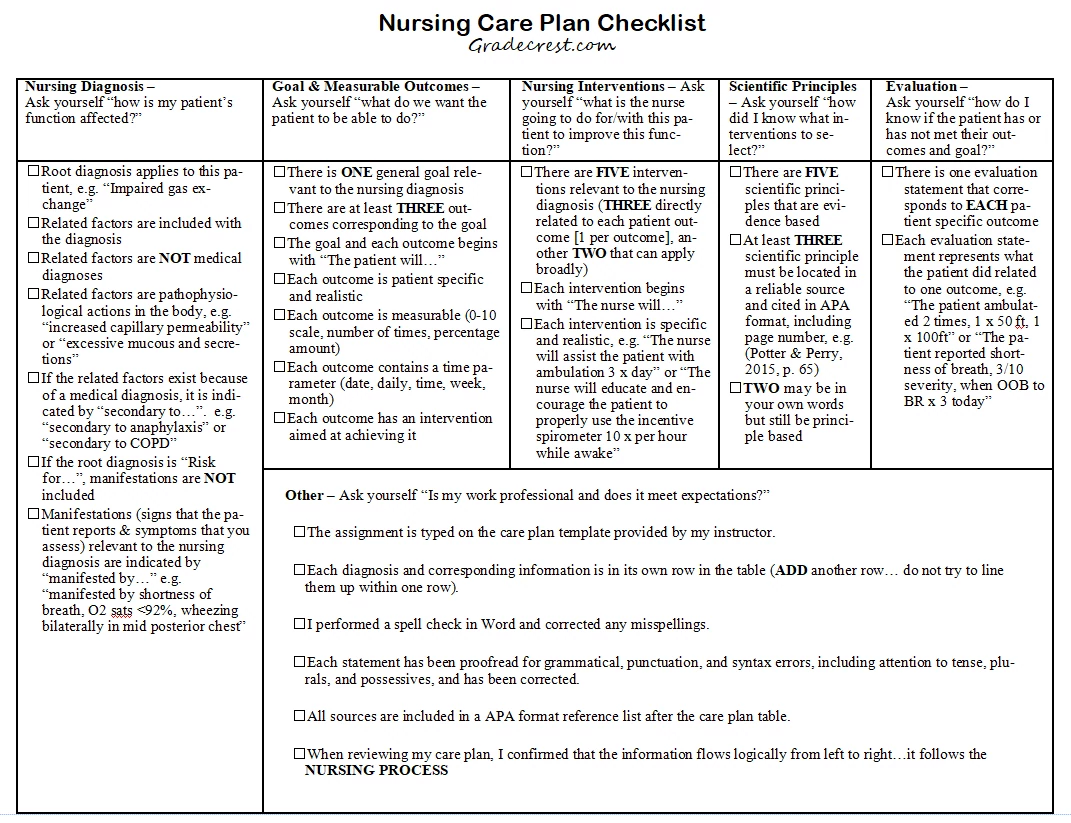
If you are a professional nurse or a nursing student, caught up with time, and need someone to help with your nursing plan assignment, our custom writing service can help.
GradeCrest.com has had the privilege to work on nursing plan care plans for students from UAE, United States, United Kingdom, Australia, and Canada. We are the best nursing coursework writing service online. Our nursing care plan writing service is affordable, legit, and reliable.
We have helped students with nursing capstone projects, nursing coursework help, and nursing assignments. Today, we have a stream of nursing students seeking help with the nursing assignment because they trust our writers to deliver quality and plagiarism-free nursing homework or assignment.
As a custom nursing essays help hub, we can also handle your nursing essays, SOAP notes, PICOT statements, nursing capstone projects, nursing discussion posts and responses, and nursing term papers.
We understand the role of NCP in proper patient care planning and nursing intervention execution. If you do not understand how to write a diagnosis or how to write a nursing care plan, or even a case study, leave it to our professional writers.
Our professional nursing writers understand how to write nursing care plans. We remain the best nursing assignment writing website. Trust us, always, for your nursing care plan writing assistance. Get help now!